🎥 Video: Gamified Loyalty in Banking & Fintech.
Save your seat.
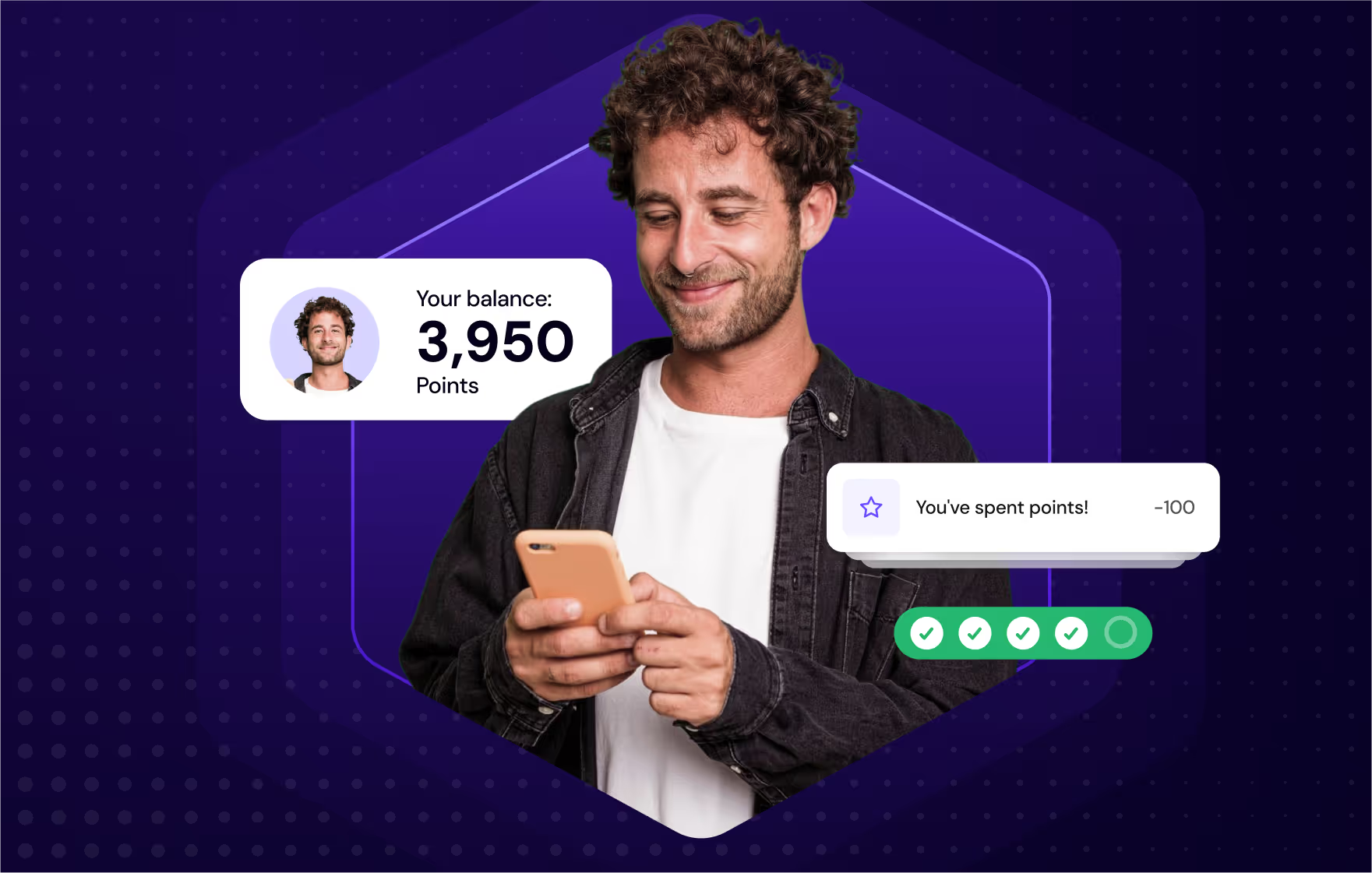

Finding the right tool to run a loyalty program has never been more important for brands that want to keep customers coming back. With so many customer loyalty software options available, it's not always obvious which platform fits your needs best, from simple digital stamp cards for small shops to full-scale loyalty management systems built for enterprises.
The platforms in this list represent the most trusted names. They cover everything from referral programs and automated rewards to experiential rewards that tap into deeper connections with a customer base. Some solutions are built for fast setup in e-commerce, while others focus on large-scale programs that integrate with customer relationship management systems and help brands analyze customer behavior across channels.
Take a look at the top 12 leading loyalty platforms and what makes them stand out: their strengths, use cases, and the types of businesses they serve.
Below is a comparison table of some of the top loyalty software platforms in the market.
We've included a mix of solutions catering to different needs, from SMB-focused tools to enterprise-grade platforms, to illustrate how they stack up on pricing and availability of free trials, as well as the typical target business segment for each.
As shown above, pricing models vary significantly. SMB-oriented platforms like Smile.io and Yotpo offer free tiers or low starting prices, making them popular with smaller businesses. On the other hand, enterprise solutions such as Salesforce Loyalty, Oracle, or Annex Cloud typically work on custom quotes and require sizeable budgets. Many enterprise platforms don't advertise free trials, instead providing demos or pilot programs on request. Mid-market solutions like Fivestars sometimes offer a trial period of around 30 days.
Amid this variety, Open Loyalty stands out as the leader for companies that want a flexible and future-proof approach. Its headless architecture and API-first design allow businesses to build highly customized loyalty mechanics while still relying on a proven, scalable foundation. The build-and-buy model makes it a strong choice for enterprises that don't want to compromise between off-the-shelf software and fully bespoke development.
When choosing a loyalty platform, look beyond cost and match the solution with your technical environment, customer base, and growth plans. Trends shaping the industry, such as headless systems, AI-driven personalization, gamification, and the rise of paid loyalty models, show how expectations are evolving. For a deeper look at what's driving loyalty strategies in 2026 and beyond, check out our Loyalty Program Trends report.
Next, we provide a brief overview of each platform, highlighting its standout features and what type of business it suits best.
In this comparison, we took a closer look at nine available loyalty solutions that dominate the market. You can read about their overall performance as expressed by our reliable loyalty experts, as well as the pros and cons voiced by their users, which we sourced from trusted platform review sites.
Here's a quick list of the 12 leading customer loyalty platforms in 2026: Open Loyalty, Yotpo, LoyaltyLion, Smile.io, Salesforce, Annex Cloud, and others.
Open Loyalty is a headless loyalty platform known for its flexibility and developer-friendly design. It provides a rich set of building blocks (via APIs and SDKs) to create customized loyalty mechanisms, rather than a one-size-fits-all solution. Open Loyalty's modular approach means brands can tailor programs to their specific needs and integrate loyalty functionality into any app or system easily.
Open Loyalty is used by over 100 companies in 45+ countries to power their loyalty and gamification programs.
Like no other solution, it's quick to implement and offers full freedom of development and integration at the API level. Companies can choose to deploy Open Loyalty as a cloud SaaS or on-premise, and even extend it thanks to its API-oriented core.
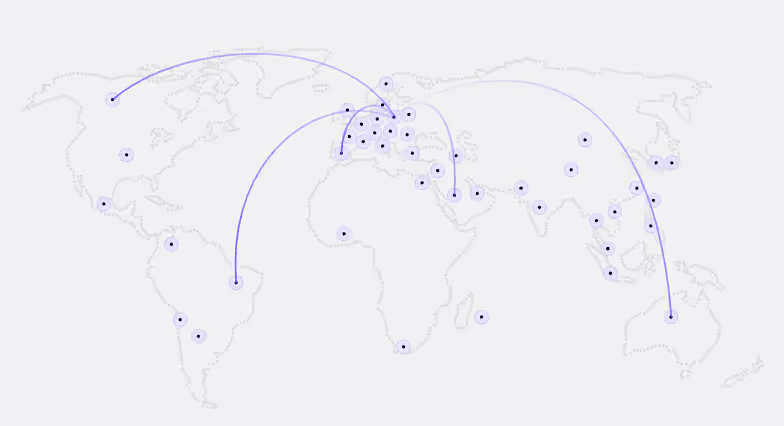
⭐ Ideal for: Medium to large enterprises that need a highly customizable loyalty solution. It's suitable if you have capable development resources or an existing digital platform and want to embed loyalty features into it (for example, integrating loyalty into a mobile app, e-commerce site, or POS system with custom user experiences).
Open Loyalty is also a strong fit for companies considering a bespoke loyalty system. It provides a robust foundation so you don't have to reinvent the wheel, while still allowing unlimited customization.

Open Loyalty clients appreciate the platform and its capabilities, saying:
👉 Read more opinions on Open Loyalty on G2 or Capterra.

Smile.io is one of the loyalty program solutions for small and medium-sized e-commerce businesses. It operates as a plug-and-play app for platforms like Shopify, Wix, and others. Smile (formerly Sweet Tooth) powers rewards programs for thousands of online stores, focusing on simplicity and quick launch.
Smile.io primarily offers points programs, VIP tier programs, and referral programs. It's built to help turn one-time shoppers into repeat customers by rewarding them for various actions. Because it's designed for SMBs, it emphasizes an easy setup and a clean, customer-friendly interface over extremely deep customization (though it's quite configurable within the boundaries of common use cases).
⭐ Ideal for: Mid-sized and enterprise businesses that require customizable program structures. The platform can support more advanced loyalty models, such as point systems, multi-brand arrangements, and partner-based programs. It's used in sectors like retail, finance, and travel, where integrations and data control are part of the requirements.
Sources:
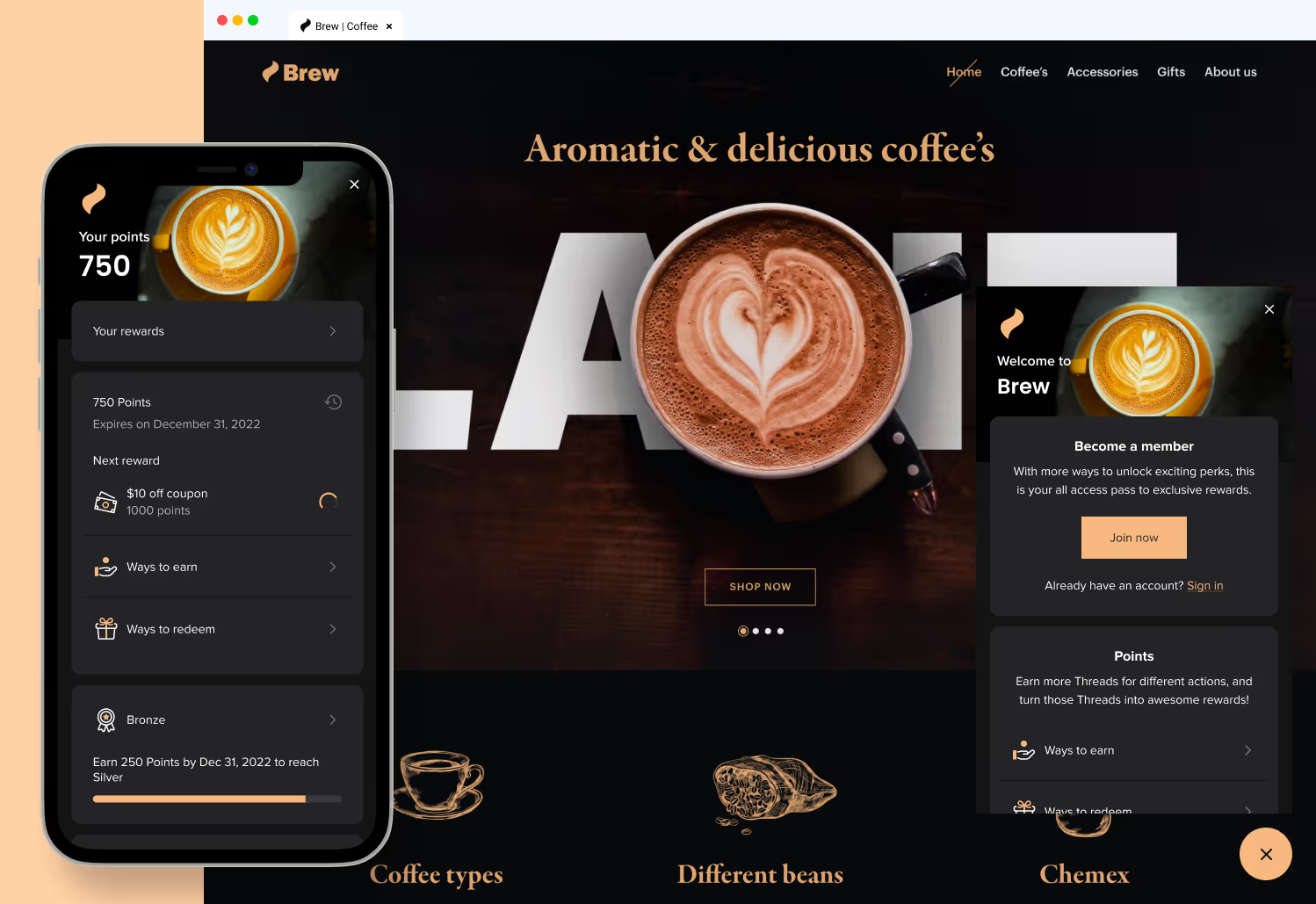
Cheetah Digital is an all-in-one customer engagement platform that includes loyalty as part of its broader marketing suite. Unlike pure-play loyalty providers, it positions loyalty as one element in a larger set of tools for customer data, personalization, and cross-channel campaigns.
Besides, Cheetah Digital is often adopted by companies that value integrated email, personalization, and loyalty management in one system. While it doesn't match the depth of specialized loyalty software, it can be a good fit for businesses looking to unify their marketing stack.
⭐ Ideal for: Enterprises that use a single platform for multiple engagement functions. Loyalty is one of several modules, positioned alongside marketing automation and personalization. The system may be suitable for companies that don't require highly customized loyalty mechanics and prefer a bundled approach rather than a specialized solution.
Sources:
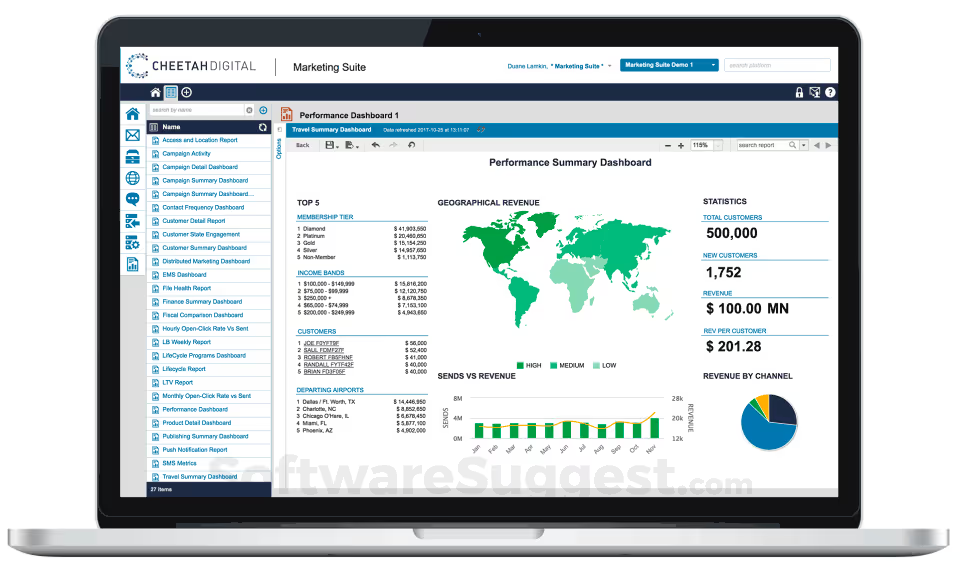
Talon.One is a promotion and loyalty engine that allows businesses to create and manage promotions, coupon campaigns, referral programs, and loyalty point systems. Talon.One started as a developer-friendly promotion API, making it very powerful for custom rule design and integration. It has since grown to serve as a versatile loyalty solution for companies that want fine-grained control over their promotional logic.
Also, Talon.One is used by companies to build promotion rulesets (for example, conditional discounts, bundle offers, loyalty point multipliers for certain events, etc.) using a rule builder. It then exposes these promotions via API to be evaluated in real time in your app or website.
⭐ Ideal for: Mid-size companies or enterprises that have technical resources available for integration. The platform is used in sectors such as e-commerce, fintech, and on-demand services where frequent promotions are required. Pricing is usage-based and generally positioned at the enterprise level, which may limit accessibility for smaller companies.
Sources:

Antavo is a loyalty technology provider known for its no-code, highly customizable loyalty platform. Also, Antavo's platform can power complex loyalty programs and is unique in offering some physical-world integrations like loyalty kiosks and card solutions for omnichannel experiences.
⭐ Ideal for: Mid-size and enterprise retailers, fashion brands, and other businesses that require more advanced loyalty setups. The platform supports features such as tiers, gamification, and paid membership programs. It includes options for in-store integrations like kiosks or card readers, which may be relevant for physical retail environments.
Sources:
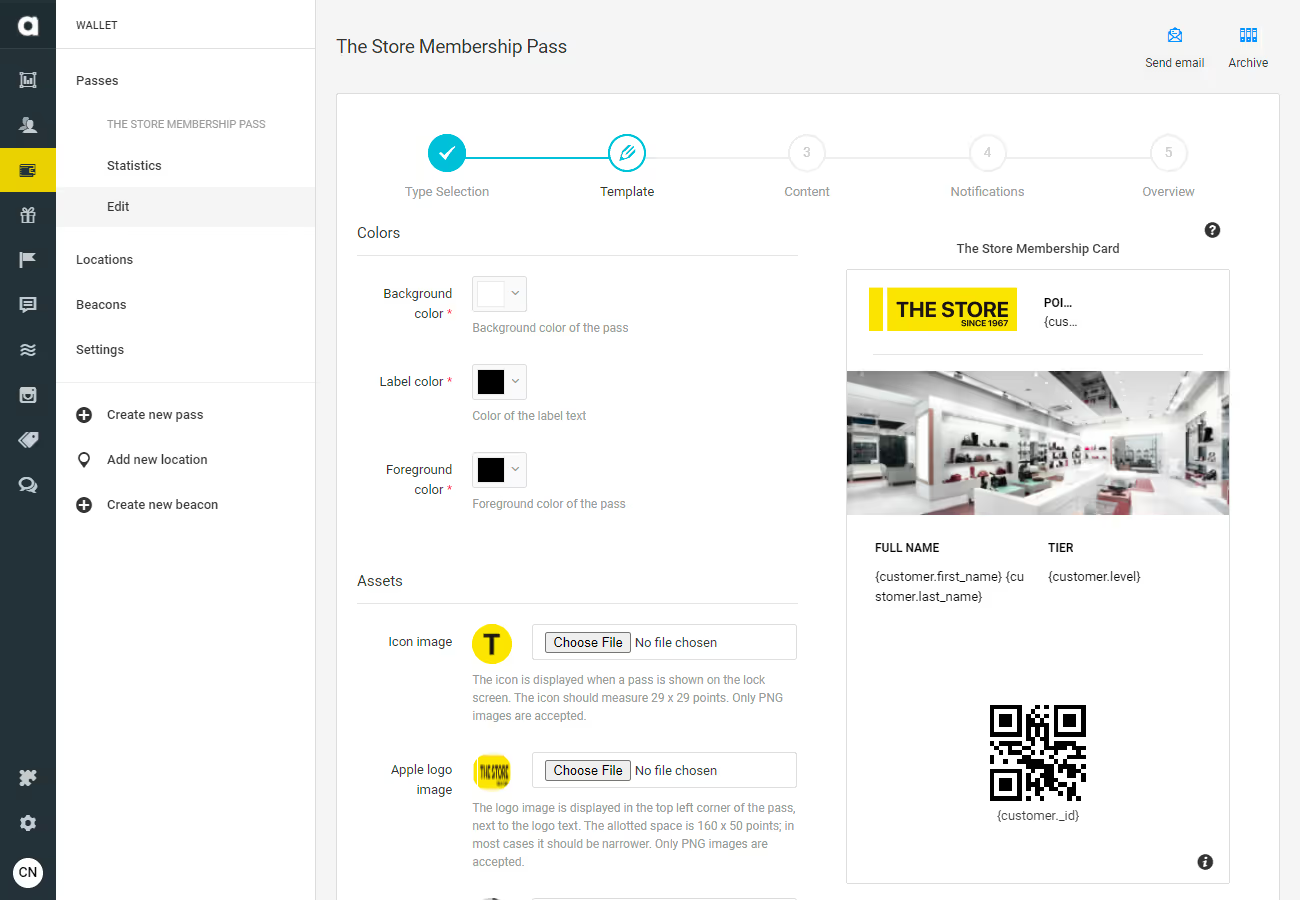
Comarch Loyalty Management is an enterprise-grade solution designed for large organizations with complex customer engagement needs. It's part of Comarch's wider portfolio of IT systems, which cover industries such as telecom, finance, retail, and travel. The platform is often chosen by airlines, airports, and global retail brands that require loyalty to integrate tightly with existing systems like reservations, payment, or ERP.
What's more, Comarch's loyalty system is known for being robust and feature-rich, but also complex. It's typically deployed by companies with substantial budgets, dedicated IT resources, and the need to support large-scale loyalty programs with millions of members.
⭐ Ideal for: Large enterprises such as airlines, airports, and multinational retailers that require loyalty systems with industry-specific integrations. The platform is suited to organizations with significant budgets and dedicated IT resources, as it's typically implemented for large-scale and expensive programs.
Sources:
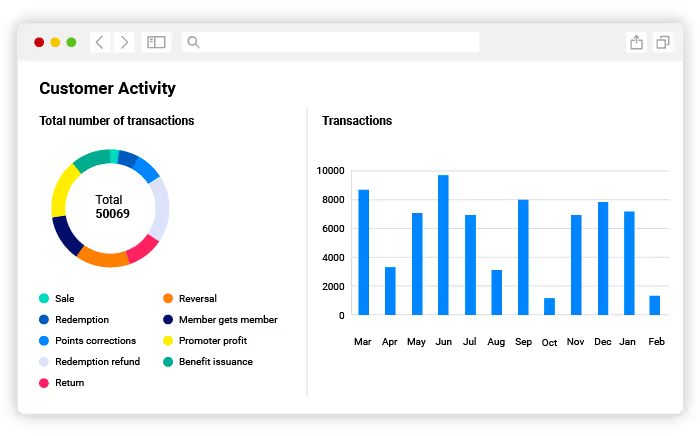
Annex Cloud is an enterprise loyalty provider offering a multi-product suite for customer engagement, combining traditional loyalty programs with referral marketing and user-generated content (UGC) capabilities. It enables companies to create unified engagement programs that reward purchases, referrals, reviews, social posts, and other advocacy behaviors.
Besides, Annex Cloud comes with native connectors to major enterprise systems like Salesforce, SAP, Adobe, and Oracle, which makes it a choice if somebody wants loyalty to plug into an existing tech stack.
⭐ Ideal for: Large businesses and retail organizations that require loyalty software as part of a broader engagement system. The platform integrates with enterprise tools such as Salesforce and SAP and may be used by companies that include referrals, reviews, or user-generated content in their programs. It's primarily for enterprises with established digital infrastructure, larger budgets, and internal teams to manage implementation.
Sources:
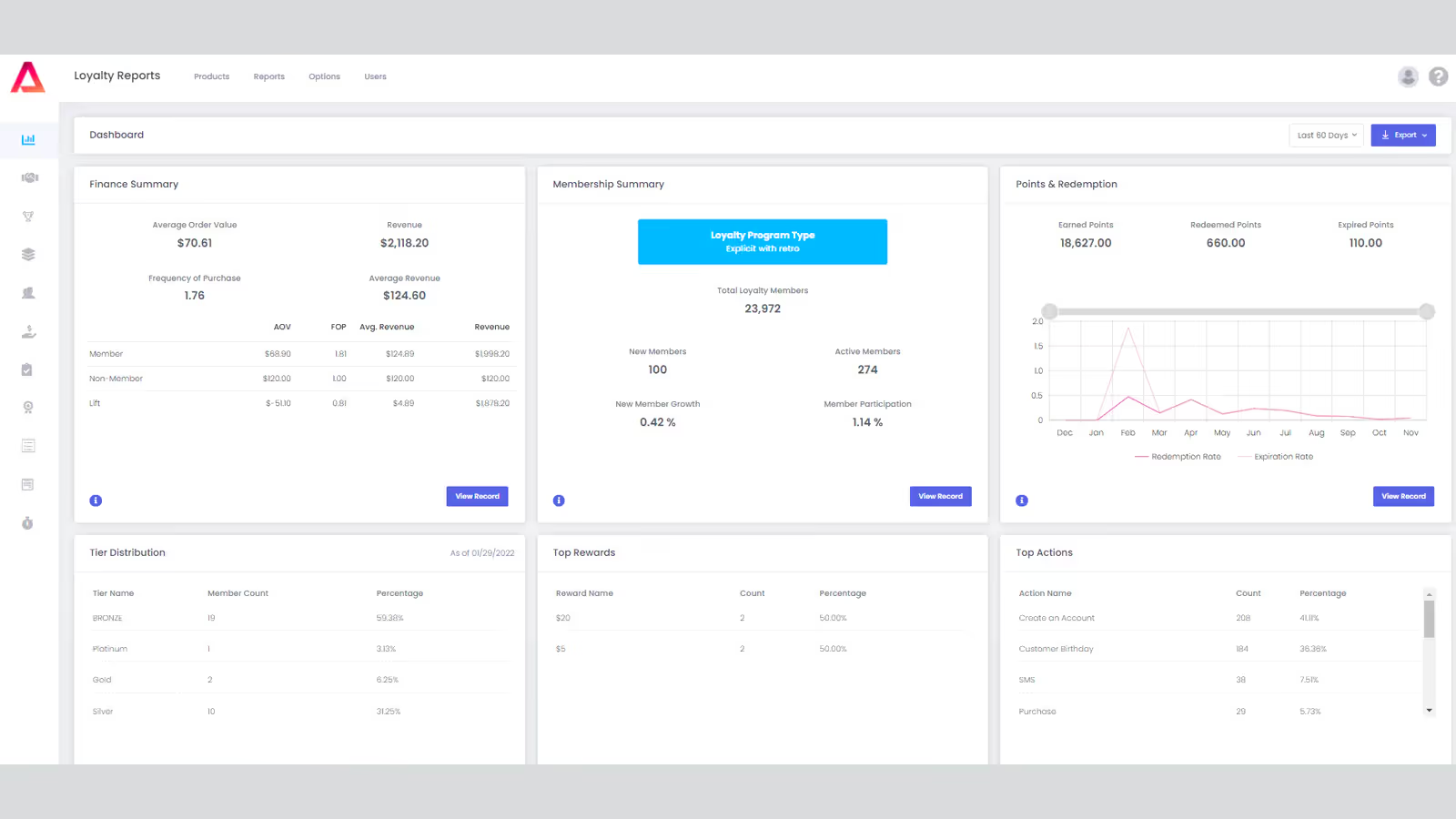
Oracle CrowdTwist (part of Oracle's Loyalty Cloud within the Oracle Customer Experience suite) is another enterprise loyalty platform, supporting large-scale loyalty and engagement programs. Oracle acquired CrowdTwist and integrated it into its CX portfolio, enabling a broad set of loyalty functionalities alongside Oracle's marketing, commerce, and CRM solutions.
Oracle's loyalty platform enables brands to run omnichannel points and rewards programs that drive customer lifetime value. It allows handling multi-brand or coalition programs, complex earning rules, and high-volume member activity (e.g., retailers or consumer goods companies with millions of customers).
⭐ Ideal for: Enterprise retailers, coalitions, and large-scale loyalty programs that involve complex requirements. The system is positioned for organizations already using Oracle's ecosystem and seeking to extend it with loyalty functions. It's mainly adopted by large retailers, hospitality groups, and multinational brands. Implementation typically requires Oracle services or external partners, and the cost and scope may not be suited to mid-market companies.
Sources:
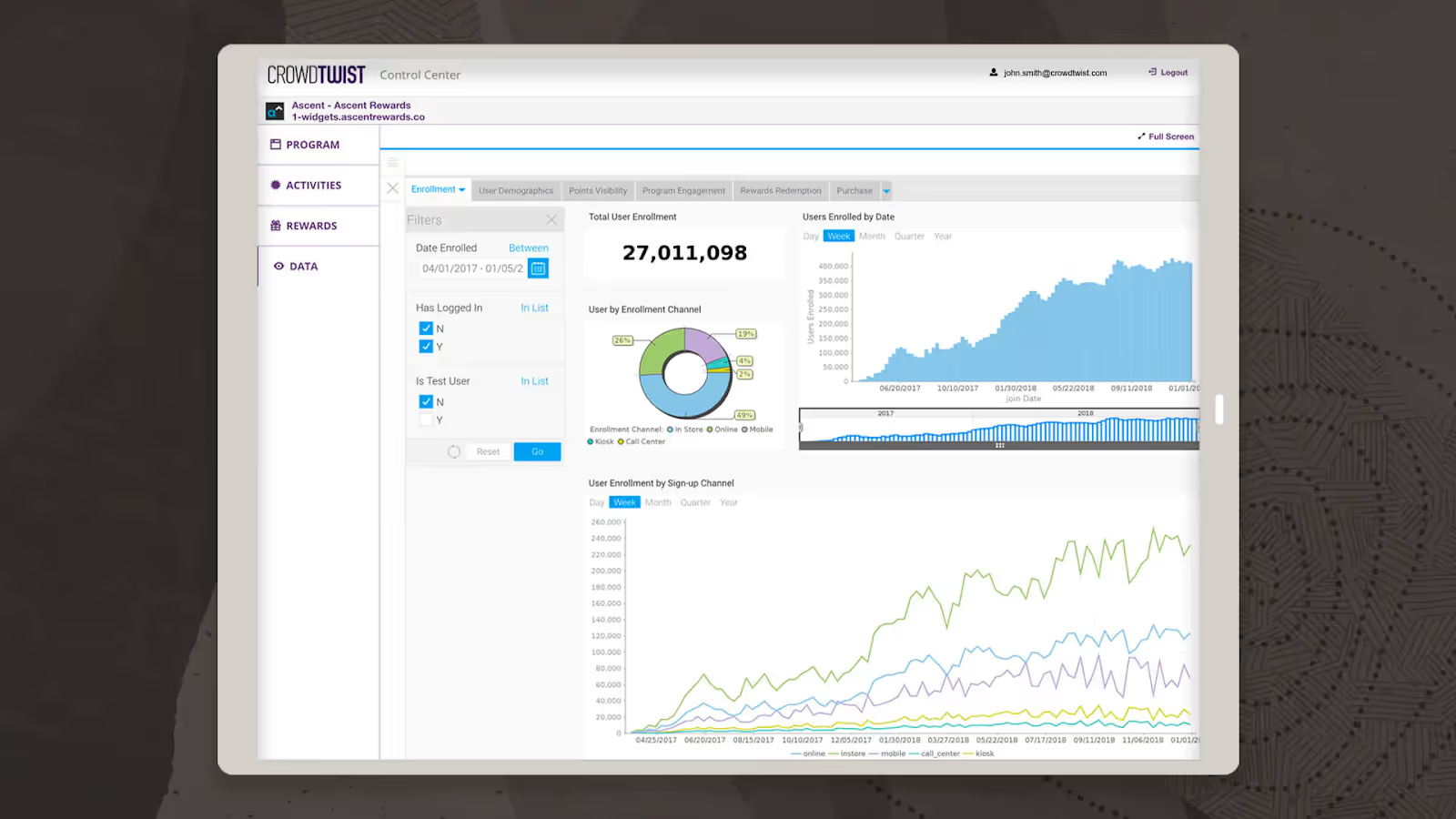
Kognitiv by Aimia is a loyalty platform designed to help businesses manage customer engagement through data-driven programs. It provides the technology and logic needed to identify loyal customers, segment audiences, and deliver campaigns that encourage ongoing participation.
The system is used in industries such as retail, consumer goods, travel, and financial services, where companies seek to create structured programs that connect purchases and engagement with rewards.
⭐ Ideal for: Retail, consumer goods, travel, and financial services companies that require a standard loyalty platform with segmentation and campaign management features. The system can be used to identify loyal customers, run promotional campaigns, and manage partner-based programs. It's positioned more for organizations seeking an established structure rather than highly customized loyalty mechanics.
Sources:

TrueLoyal, previously known as Zinrelo, is a SaaS-based loyalty platform designed to combine transactional rewards with engagement and retention analytics. Originally launched as ShopSocially, the product later became Zinrelo before adopting its current name. The platform emphasizes the ability to drive repeat sales through analytics, segmentation, and targeted loyalty campaigns.
TrueLoyal caters mainly to mid-size and enterprise clients, especially in e-commerce and retail. It offers integrations for platforms such as Shopify and Magento, along with APIs for custom connections to other systems.
⭐ Ideal for: Medium-sized retailers and online businesses that need loyalty software with reporting and analytics capabilities. Used in industries such as fashion, beauty, grocery, and e-commerce, as well as some B2B contexts. Less visible than larger providers but positioned with features suitable for mid-market and enterprise use cases.
Sources:
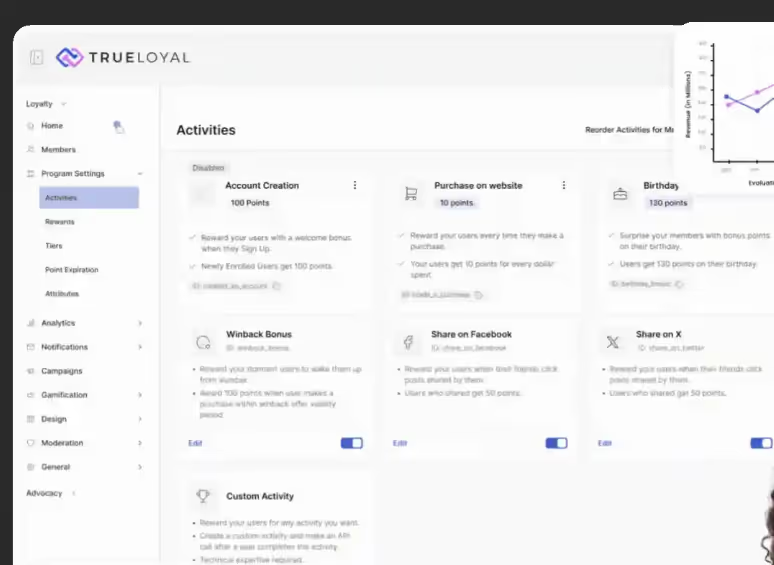
Yotpo Loyalty and Referrals is part of the Yotpo suite of products for e-commerce brands. Yotpo is known for its customer reviews, ratings, and SMS marketing tools, and it acquired Swell Rewards to add a loyalty and referrals platform to its offering. As such, Yotpo Loyalty is popular among online stores and direct-to-consumer brands.
Moreover, Yotpo Loyalty enables merchants to set up points-based programs, VIP tiers, and referral incentives with relatively low effort. Since it ties into the Yotpo ecosystem, it can integrate loyalty data with other marketing efforts (for example, using loyalty segmentation to send targeted SMS campaigns).
⭐ Ideal for: Small to mid-market e-commerce businesses that want a loyalty tool connected to online shopping platforms. It's often used by brands on Shopify and similar systems, with adoption in sectors such as beauty, fashion, and consumer goods. The platform offers a free plan with limited functionality and paid tiers for features like VIP programs and customization. While suitable for digital-first brands, larger companies may find its scope limited compared to enterprise-focused solutions.
Sources:

Yotpo Loyalty dashboard. Source: https://www.yotpo.com/
Fivestars is a loyalty and marketing platform tailored primarily to brick-and-mortar businesses. In 2021, Fivestars was acquired by SumUp (a payment technology company), highlighting its significance in the small business loyalty space.
The described Fivestars platform provides businesses with tools to sign up customers (often via phone number entry on a tablet), track their visits and spending, and send them promotions to drive repeat visits. It combines a digital loyalty program (replacing traditional paper punch cards) with messaging capabilities like SMS and email marketing.
⭐ Ideal for: Local retail, restaurants, salons, and small service businesses that need a basic loyalty and marketing system. The platform is primarily used offline, with sign-ups managed through in-store tablets and simple integrations with some point-of-sale systems. It's mainly suited for small operators without dedicated marketing resources.
Sources:

Customer loyalty software (sometimes called loyalty program software) is a tool that helps companies build, manage, and track loyalty programs in one place. Instead of juggling spreadsheets or manual processes, a loyalty platform automates the work: tracking purchases, calculating points, managing member profiles, distributing rewards or coupons, and giving you reports on how the program is performing.
The goal is simple: encourage customers to come back, spend more, and feel recognized for their loyalty. To achieve that, modern platforms support a wide mix of program types, such as points-based systems, VIP tiers, cashback rewards, referrals, or even paid memberships. Most also include features for personalization, so members can see generic discounts as well as offers or messages tailored to their behavior, preferences, and history with your brand.
Flexibility is another strength. A loyalty platform can be delivered as a standalone app, integrated into your existing tech stack, or even embedded in mobile experiences. It works across industries too, from retail and hospitality to fashion, beauty, and financial services. No matter the sector, the software is designed to help retain customers and grow their long-term engagement.
While the details vary from one provider to another, most platforms include a familiar set of features:
So, loyalty software brings all sorts of benefits and assists companies in building and maintaining strong customer relationships by rewarding customer loyalty and providing personalized experiences.
Customer tracking is a loyalty software feature that allows you to monitor and manage purchases, reward points, and other loyalty activities in a centralized location. It can include tracking customer transactions, monitoring reward point accumulation, managing point redemptions, or selecting rewards that wrap up in measuring loyalty program health.
Some loyalty software systems include advanced tracking features, such as observing loyalty members' activities across multiple channels, including in-store, online, and mobile apps. In addition, a customer tracking feature is a must for accurately following loyal members' activities and ensuring they receive the incentives to which they're entitled. A loyalty system can provide valuable insights into customer behavior, allowing you to understand them better.
Another feature of loyalty software is personalization, meaning the ability to communicate directly with customers and offer personalized rewards based on their individual preferences and behaviors. You can include tailored emails or notifications, targeted promotions and deals, and personalized recommendations based on previous purchases or identified interests. Also, data shows that 53% of loyalty program owners plan to offer personalized rewards or offers in the next three years.
Advanced personalization capabilities in the ticketing system allow you to segment customers based on their demographic characteristics or past activities, or use machine learning algorithms to predict which shoppers are most likely to respond to specific offers.
The personalization feature helps companies create more engaging customer experiences that can drive customer loyalty and satisfaction. It can also improve the impact of a loyalty program by targeting rewards and incentives to selected audiences.
The reports and analytics built into loyalty software provide data and insights on customer behavior, allowing you to make informed decisions about your loyalty program development strategy or planned marketing activities. The most common areas approached by analytics will be tracking customer engagement and participation, monitoring the effectiveness of specific rewards or promotions, and identifying loyalty trends or patterns.
Specific loyalty software systems include advanced capabilities, such as generating custom reports or using data visualization tools to understand loyalty program members better.
You can utilize the data you collect to optimize your loyalty program and see what's working and what's not, and make adjustments based on those findings in the next step. You can also identify opportunities to improve the customer experience, such as by offering a new or improved rewards catalog or by addressing customer needs or concerns about the products/services you deliver.
Incorporating game-like elements such as challenges, badges, or leaderboards can make a loyalty program feel more interactive. Instead of simply collecting points, members are encouraged to complete tasks, unlock levels, or compete with others, which keeps them returning more often. For example, customers might earn points for completing their profile, receive a badge for reaching a certain spend threshold, or climb a leaderboard for repeat visits.
Gamification shifts loyalty from a static program into an activity customers want to engage with, and it often leads to higher participation and stronger retention. Companies use it to encourage behaviors beyond purchases, like writing reviews, referring friends, or sharing on social channels, which builds deeper involvement.
If you want to see how gamified loyalty mechanics are being implemented, explore our detailed guide on the best gamification software. You can also dive into real-world gamification case studies to learn how brands across industries have put these mechanics into practice. Research shows that gamification increases engagement by turning routine actions into rewarding milestones, helping businesses keep customers active and connected with their programs.

A modern loyalty program needs to operate seamlessly across all customer touchpoints, like in-store, online, or on mobile, so connecting the program to point-of-sale systems, e-commerce sites, mobile apps, email, SMS, and even social media interactions. A platform with true omnichannel support makes sure rewards and balances are consistent no matter where the customer engages.
Real-time syncing is notable. If a customer earns points in-store, those points should immediately appear in their online account and be ready for redemption in the app or at the next checkout. Without this kind of synchronization, customers experience delays or inconsistencies that reduce trust in the program.
Omnichannel loyalty also opens opportunities for more targeted engagement. For example, a customer who buys online might receive an in-app offer encouraging them to visit a physical store, or someone who frequently shops in-store could get a push notification with a personalized online discount.
For a deeper dive into strategies and examples, see our guide on omnichannel retail loyalty programs. It explores how leading companies link in-store and digital channels to deliver loyalty programs that feel connected and consistent.
The ability to scale a loyalty system through integrations is one of the most practical things to look at when choosing a platform. On the surface, it might feel like a "nice to have," but in reality, integrations determine how smoothly loyalty fits into the rest of your business. A platform that connects with your existing setup, like an e-commerce platform, CRM, or CDP, marketing automation, support desk, POS, accounting, or even inventory tools, will save your teams countless hours and make the program feel like a natural extension of your customer experience.
When loyalty data can move freely between systems, everyday tasks become simpler. For example, a customer's points balance can show up in your mobile app, a reward redemption can automatically trigger a thank-you email, or your service team can instantly see a member's tier when handling a support ticket. All of these small connections add up to a smoother experience for customers and less manual work for your staff.
The best setups also come with open APIs or pre-built connectors. That gives your developers the freedom to experiment and add custom logic, while marketers can use out-of-the-box integrations to launch campaigns quickly. In practice, this means you can start simple and gradually add more touchpoints as your program grows, without having to replace the platform every time your needs change. For a detailed breakdown, see our guide on how to integrate an API-first loyalty engine with your tech stack.
Handled properly, integrations turn your loyalty platform into a central hub for customer interactions and data. Instead of juggling spreadsheets or scattered reports, you get one clear view of how people are engaging with your program, how rewards are being used, and where the biggest opportunities are. A practical example of this in action is our article on connecting an API-first loyalty engine with marketing automation.
Over time, this not only helps you run the program more smoothly but also makes it easier to show the business impact of loyalty. You can even extend the functionality further by adding custom engagement layers, as explained in our guide on how to extend your product with API-first loyalty and gamification features.
Mobile access has become one of the most practical features of loyalty platforms, simply because so many customers now interact with programs on their phones. A lot of them prefer to engage this way, and younger shoppers are far more likely to open an app than log in from a desktop. For brands, this makes mobile a natural place to connect, reward, and keep the program top of mind.
A good loyalty system should either come with its own white-label app or give you the option to integrate directly with your existing app. That flexibility allows customers to check their points balance, browse available rewards, or redeem offers with just a few taps. In practice, this might mean a member receives a push notification about a bonus campaign, scans a QR code at checkout to collect points, and then uses a digital loyalty card stored in their mobile wallet to redeem a reward. All of these micro-interactions keep the program visible and easy to use.
Customization also matters here. The ability to adjust the look and feel of the app, colors, branding, and navigation helps make the loyalty program feel like a seamless part of your business, not an afterthought. And when the app can connect with your other marketing systems, you get even more opportunities: tailored product recommendations based on past purchases, location-based offers, or time-sensitive promotions sent directly to a phone. For a detailed breakdown of the features customers expect today, see our guide on proven mobile loyalty app features.
Handled well, a mobile loyalty app becomes more than just a digital punch card. It turns into an always-on touchpoint where members can interact with your brand, track their progress, and feel rewarded instantly. For companies building or upgrading apps, there are also ways to streamline development. Learn how with our article on reducing mobile loyalty app development costs with Flutter.
The global loyalty management market is booming. More and more companies are investing in loyalty programs, and they're becoming one of the essential tools for generating revenue. There's no denying that the as it's expected to grow from $5.57 billion in 2022 to $24.44 billion by 2029, showing a CAGR of 23.5%.
The loyalty solution market is highly fragmented, and different solutions are available for SMB or Enterprise customers. Companies have many options when choosing loyalty software, and the best solution will depend on their specific needs and goals. They can choose from such solutions as:
The landscape continues to evolve, and whenever a new player emerges, the rest of us watch their actions closely.
Do you see how diverse trends are right now?
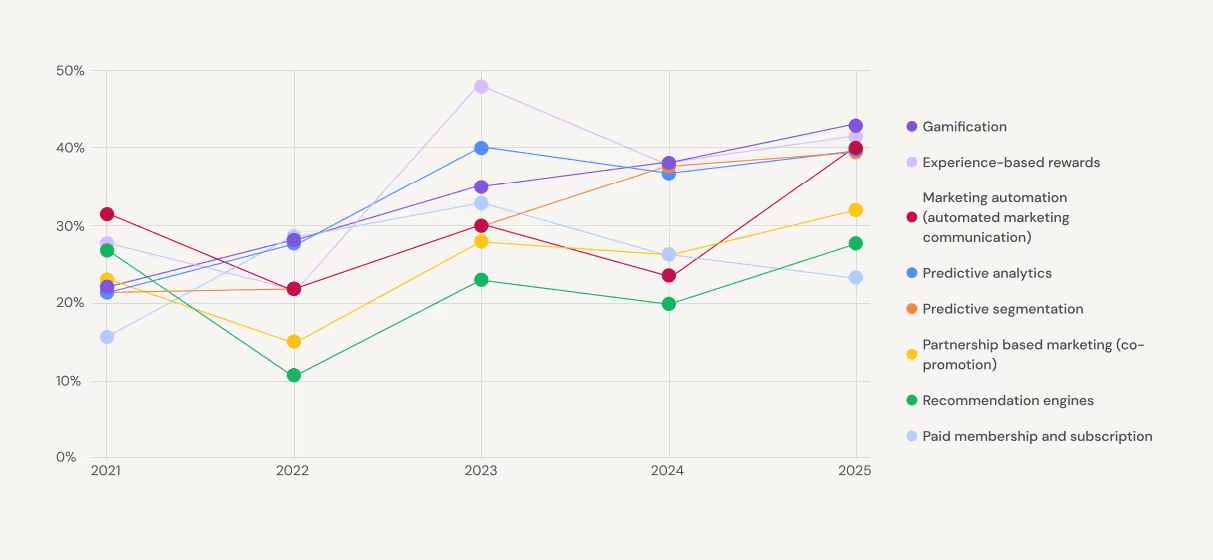
This brings us to the real showstopper, headless architecture, which is the way to go for loyalty system development. Our observations show that enterprise clients with the most mature technical teams are moving from monolithic to headless solutions to make the technology more cost-effective and quicker to expand and personalize in the future. It's really becoming the new standard!
There's also still a build vs. buy dilemma, with companies having unique requirements facing a choice between:
No one said that building a loyalty system would be easy. You definitely have to do some digging beforehand.
The loyalty solutions landscape is also diverse in types of offerings. Companies have many options when choosing a solution, and the "best" fit depends on their goals and scale:
Another distinguishing feature of the current loyalty landscape is that marketers and product teams prefer to build on top of their stack and add specialized components rather than replace existing solutions, for example, marketing automation or CRM.
Besides, enterprise clients want full ownership of their data. They often require full control over customer data, which can be achieved with on-premise or private-cloud deployments, where the database is separated from other entities.
Businesses use technology solutions to manage and track loyalty programs, including CRM systems, mobile apps, point-of-sale (POS) systems, marketing automation platforms, mobile marketing platforms, mobile payment systems, customer feedback and review platforms, or social media management tools. Also, the major features that companies consider when choosing loyalty software are customer tracking, personalization, reporting, analytics, and custom integrations.
The loyalty software landscape constantly evolves as companies look for new ways to engage and retain their customers. Look at the loyalty trend matrix included in our Loyalty Program Trends report.
Some of the top customer loyalty software options include Open Loyalty, Salesforce Loyalty Management, Antavo, Zinrelo, Smile.io, and Yotpo. These providers offer a mix of features such as points-based customer loyalty programs, tiered rewards, and referral programs to help increase customer retention.
Many of them also provide tools to analyze customer behavior and align rewards with customer preferences, which makes it easier to foster relationships and drive repeat business over time.
Enterprises often choose loyalty management systems with a proven track record of handling large-scale programs. Popular platforms in this space include Open Loyalty, Salesforce, Oracle CrowdTwist, and Comarch, which integrate tightly with customer relationship management tools and other enterprise systems.
These solutions typically include support for automated rewards, complex loyalty status rules, and advanced reporting to understand consumer behavior across multiple social media channels, apps, and offline touchpoints.
The "best" choice depends on business needs, budget, and technical setup. Salesforce and Oracle are widely adopted because they integrate with existing data platforms, while Open Loyalty stands out for enterprises that want flexibility. Its API-first approach makes it easy for businesses to create tailored programs with personalized interactions, experiential rewards, and even Apple Wallet integration for mobile use.
The ability to customize earning rules, support unlimited transactions, and incentivize customers with both classic and modern reward types makes Open Loyalty a strong option for companies looking to increase customer loyalty at scale.
While some loyalty tools have experimented with open-source models in the past, most leading platforms today are commercial. Open Loyalty is often compared to open-source because of its headless architecture and API-first design, which give businesses freedom similar to what they'd expect from an open-source project but with the support, stability, and roadmap of a dedicated product company.
This approach allows businesses to create programs with flexible earning rules, digital stamp cards, referral programs, or even Apple Wallet integration, while scaling to handle unlimited transactions. The platform combines the adaptability enterprises want with enterprise-level reliability, making it a strong choice for companies looking to increase customer loyalty without the risks of managing open-source software.
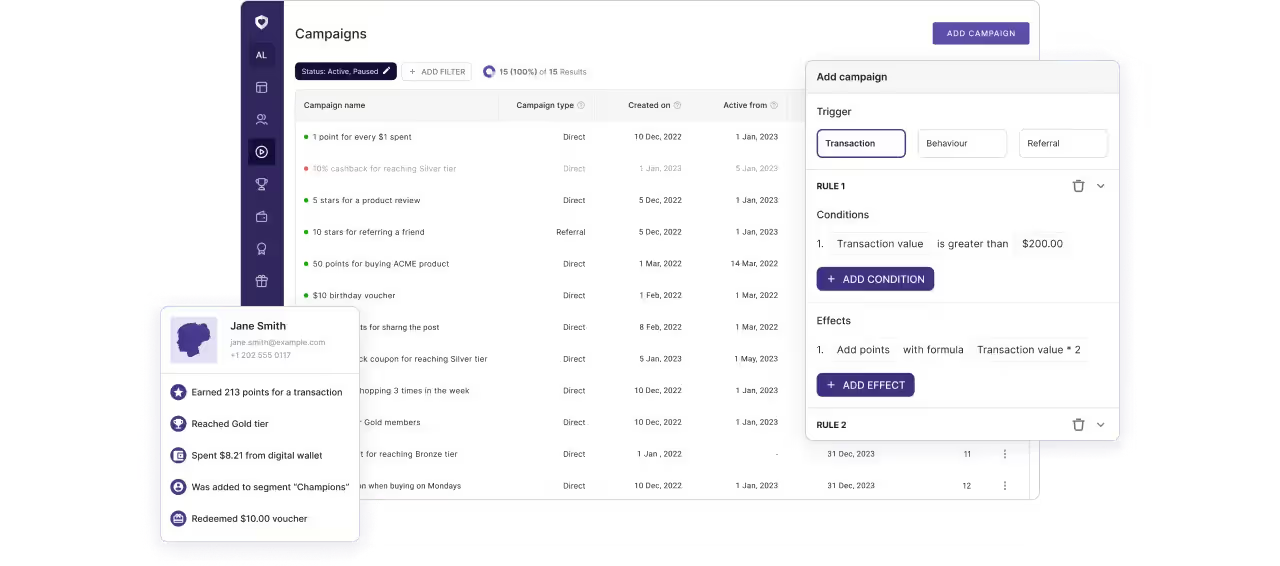
In 2026, some of the most popular platforms include Open Loyalty, Antavo, Zinrelo, Yotpo, Smile.io, and Annex Cloud. These solutions are widely used across industries such as retail, travel, and finance. Businesses choose them for features like digital stamp cards, support for experiential rewards, referral programs, and flexible campaign engines to incentivize customers. They help brands deliver personalized interactions, encourage brand affinity, and adapt to shifting customer preferences. All of which makes it easier to increase customer loyalty and maintain a healthy customer base.
With these systems, customers earn points across different channels and can redeem them for rewards in ways that match their shopping habits. The platforms give flexibility so that a business can create tailored programs instead of relying only on predefined templates. Some vendors also provide detailed pricing information, while others require direct contact for quotes, which is worth considering during evaluation. Reporting tools highlight metrics such as redemption rates, repeat purchase frequency, and customer engagement levels, helping companies track the impact of their loyalty initiatives.
We hope this loyalty software comparison gave you a clear look at leading customer loyalty platforms and the features that stand out. The right choice depends on your goals, budget, and how complex your program needs to be. Take time to explore the options: ask for demos, send an RFP, and weigh the feature set, support, setup effort, and long-term costs.
Take as much time as you need to research and compare your options thoroughly. You should certainly try to send an RFP to the best loyalty providers. Don't be afraid to ask questions and request demos or tests to get a better feel for each solution. It may also be helpful to consider the level of support and resources provided by each provider, as well as their track record and reputation in the market.
Loyalty software is a significant investment for your business because it can help you retain and grow your customer base, increase customer satisfaction, drive long-term success, and create a positive and rewarding experience for your audience. Keep in mind that the best loyalty software for your business also depends on factors such as the size of your company, the type/number of experts on board, the complexity of your loyalty program, and your available budget.
When evaluating providers, review how they handle reward management and if they allow you to manage unlimited customers without hidden limits. Strong platforms also make it simple for customers to earn points, stay active, and keep existing customers connected with customer-engaged campaigns that tie into your overall strategy.
If you want an on-budget solution that fits your needs, goals, and growth plans, in this case, you might consider Open Loyalty. It's an effective headless loyalty platform with the world's most flexible loyalty APIs and highly adaptable architecture, available in SaaS and on-premises/private cloud models. Open Loyalty is sure to adapt to your business every step of the way.
In a market full of choices, the right loyalty platform helps you stand out. Here's to building a program your customers enjoy and to outcomes your business will notice.
Get a weekly dose of actionable tips on how to build and grow gamified successful loyalty programs!




